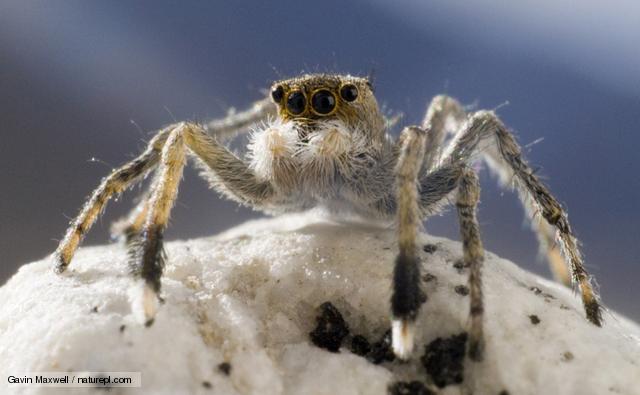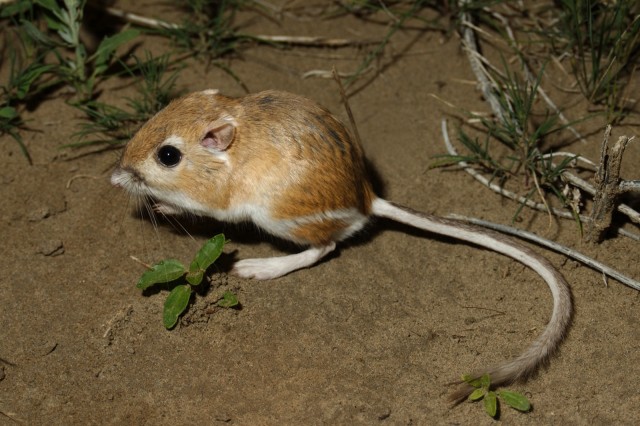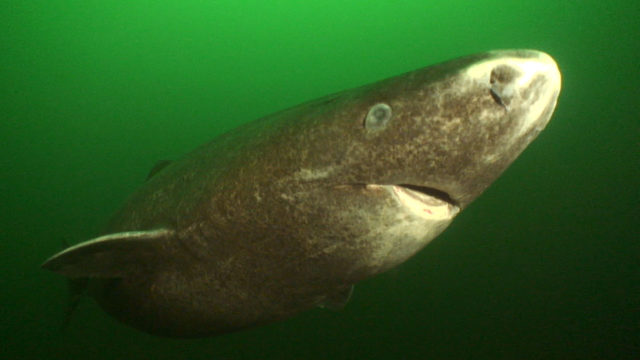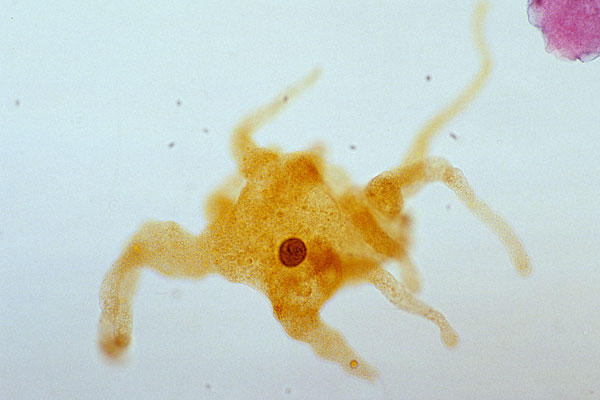https://ift.tt/1ASbvh2
Some organisms just have the edge over others, with the ability to withstand extreme temperatures that others simply can’t. There are a lot of tough creatures out there, but these 10 are the absolute toughest.
10. Himalayan Jumping Spider
An Asian goose has been seen flying as high as 6437 meters (21,120 feet), while the highest residency in the world is La Rinconada in Peru with its people living at 5100 meters (16,700 feet) above sea level. But the record for the highest permanent resident in the world belongs to the Himalayan jumping spider.
Living at elevations as high as 6700 meters (22,000 feet), the spider (euophrys omnisuperstes, which literally means “standing above everything”) relies on small insects blown up by the wind as its main source of food. The spider also has to survive on very little oxygen.
9. Giant Kangaroo Rat
When we think of animals that can last the longest without drinking water, the camel is usually the first one that comes to mind. But a camel can only last 15 days in the desert without water (and no, they don’t store water in their humps). Meanwhile, there’s actually an animal that can last its entire lifetime without drinking a single drop of water!
Giant kangaroo rats are related to beavers and have a lifespan of three to five years. They get the moisture they need from their food source, which is mostly seeds. They also don’t sweat, since this will make them lose the water stored in their bodies. They’re found in Death Valley, although the little guys are endangered.
8. Thermo-tolerant Worms
Since water conducts heat more efficiently to the body, a 50 °C (122 °F) temperature in the deep sea is more dangerous than the same temperature outside the water. Because of this, bacteria flourishes in underwater places too hot to support multicellular life.
However, a worm called paralvinella sulfincola prefers to stay in places with sizzling temperatures. Scientists conducted an experiment on the worms by heating the sides of an aquarium unevenly and found that the worms actually chose to stay in the parts where the temperature reaches 45 to 55 degrees Celsius. Scientists believe that the worms evolved to prefer hotter temperatures to feast on the bacteria that no other creatures can reach. Imagine a whole field of bacon all for yourself!
7. Greenland Shark
Greenland sharks are one of the biggest yet least studied sharks in the world. Even though they move so slowly that an amateur swimmer can out-swim them, they’re very rarely seen since they typically live in waters as deep as 1200 meters (3900 feet).
They’re also the coldest dwelling shark in the world, preferring to stay in water with temperatures of 1-12°C (34-68°F). Since they live in such cold waters, the sharks move slowly to conserve energy, earning them the nickname “sleeper sharks.” They’re not picky when it comes to food, and will eat just about anything they can catch. There’s also a popular myth that says they can live up to 200 years, but until further research has been done it will stay a legend.
6. Devil Worm
For decades, scientists thought that only single-celled organisms can survive at very great depths. The theory was that because of the pressure, lack of oxygen and extreme temperatures, multicellular life wouldn’t be able to survive living miles below the Earth’s surface. Then they found microscopic worms thousands of meters under the ground.
Halicephalobus mephisto, named after the demon in German folklore, was found in samples of water 2.2 miles deep in a cave in South Africa. They’ve been seen to survive extreme conditions, like the case of roundworms surviving the space shuttle Columbia disaster. The discovery of the devil worms can expand the search for life on Mars and elsewhere in the galaxy by including subsurface environments.
5. Frogs
Some species of frogs have been observed to literally freeze during winters but still manage to stay alive until spring arrives. In North America alone there are five known species of such frogs, the most common of which is the wood frog. Since wood frogs aren’t very good diggers, they just hide under leaves come winter and get frozen together with everything around them.
They have a natural anti-freeze ability inside their bodies — even though their heart eventually stops, they’re just in a form of hibernation. High concentration of glucose coming from the frog’s liver plays a huge role in this amazing survival technique. What’s even more amazing is that these frogs can do the freezing-thawing ability either in the wild or inside laboratories, perhaps to show off their superpowers to scientists.
4. Deep Sea Microbes
We all know that the deepest point of the oceans of the world is Mariana Trench — it’s around 10.9 km (6.8 mi) deep, with extreme pressure about 1100 times sea level pressure. A few years ago, scientists found giant amoebas deep in the trench with the help of high-resolution cameras wrapped with glass spheres to endure the pressure. But more life could be thriving down there, according to scientists after an expedition by none other than James Cameron.
The director of course didn’t actually see anything with the naked eye while down there, but the sediment samples he collected proved that the trench is filled with microbes. What surprised scientists is that despite the great depth and extreme pressure, these life forms operate very efficiently. And since there isn’t much life deep in the ocean, the microbes have been feeding on the very little amount of decaying matter that reaches the abyss.
3. Bdelloid
Bdelloid rotifers are very small all-female invertebrates commonly found in freshwater. Ever since their discovery, not a single male has been found. Bdelloids produce asexually, which is a believed to have damaging effects on their DNA. And what better way to combat the harmful effects than to eat the DNA of other life forms?
Thanks to their stolen DNA, the bdelloids developed an amazing ability to withstand extreme dehydration. Even better, because of this ability they can survive radiation levels high enough to kill most animals. Scientists believe that the creature’s DNA repair ability was originally for surviving extremely dry temperatures. But since radiation directly damages DNA, the repair power became useful there as well.
2. Cockroach
There’s a popular myth that in the event of nuclear warfare, cockroaches will be the last survivors on Earth. They can survive for weeks without food or water and, disturbingly, they can even live for weeks without a head. They’ve been around for 300 million years, outlasting even the dinosaurs.
Discovery Channel’s Mythbusters did some experiments on the gross little critters to see if the radiation myth is real. The team found that 50% of the insects survived after being exposed to 1000 rads, an amount that can kill a healthy human in just 10 minutes of exposure. 10% survived 10,000 rads, which is as strong as the radiation from the Hiroshima bombing. Unfortunately, none lived to tell the tale after being exposed to 100,000 rads.
1. Waterbear
A tiny water animal called the waterbear may be the toughest creature on the face of the planet. These somehow cute and dressed up-cannon-looking animals can survive just about anything, be it extreme heat or extreme cold, high pressure or high radiation. You can even throw them into space, only to find them still alive. The creature is able to survive extreme conditions by going into a dehydrated state, where it can survive for decades! It revives once it’s placed in water, making it capable of surviving an apocalypse too.
AMAZING
TRENDS,AMAZING
via Toptenz.net http://www.toptenz.net
May 14, 2018 at 06:32AM
.png)











No comments:
Post a Comment